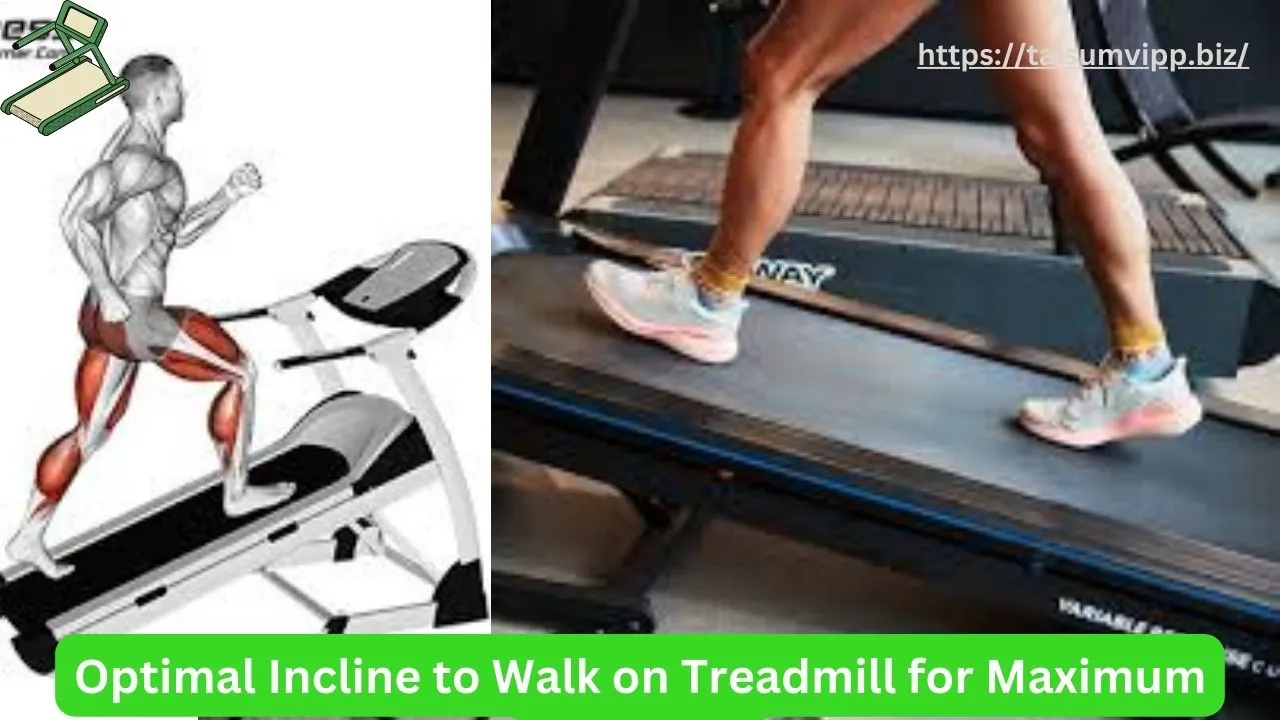Treadmills are one of the most popular pieces of exercise equipment found in gyms and homes, allowing for effective cardiovascular workouts. One crucial feature that often gets overlooked is the incline setting. Understanding how to optimally use the incline can greatly enhance your workout experience and results.
Understanding the Basics of Treadmill Incline
To maximize your workout efficiency, it’s essential to comprehend the basics of treadmill incline. Incline settings can drastically alter the intensity of your workout, engaging different muscles and increasing your heart rate.
What is Treadmill Incline
Treadmill incline refers to the angle of the running surface in relation to the ground. Most treadmills offer multiple incline settings ranging from 0 to 15 percent or even higher. A higher incline simulates walking or running uphill, which can increase resistance and change the muscle groups worked during the session.
The Role of Incline in Treadmill Workouts
Using incline during your treadmill workouts can provide various benefits, including enhanced strength training for your lower body. Adding incline allows you to engage muscles such as the calves, quadriceps, hamstrings, and glutes more effectively compared to walking on a flat surface.
Moreover, incorporating incline can elevate your heart rate, helping to build cardiovascular endurance while offering a challenging workout suitable for all fitness levels.
In addition to muscle engagement, treadmill incline can also aid in burning more calories. Research suggests that running or walking on an incline can increase caloric expenditure significantly compared to flat running. This means that even a shorter workout on an inclined treadmill can yield similar, if not greater, benefits than a longer session on a flat surface. This is particularly advantageous for those with time constraints who still want to achieve an effective workout.
Furthermore, adjusting the incline can help prevent workout monotony. By varying the incline settings throughout your session, you can create interval-style workouts that keep your body guessing and your mind engaged. For instance, alternating between flat and inclined sections can mimic outdoor terrain, making your treadmill experience more dynamic and enjoyable. This variability not only enhances your physical conditioning but also contributes to a more satisfying workout experience overall.

The Science Behind Treadmill Incline and Exercise Benefits
Research indicates that modifying treadmill incline can significantly impact your workout results, making it an integral part of any fitness regimen.
How Incline Affects Your Body
Walking or running at an incline activates more muscle fibers than horizontal training. This not only improves muscle strength but also promotes better balance and stability. Further, the engagement of these muscles leads to higher energy expenditure, which can yield improvements in overall fitness levels.
Incline workouts primarily target the glutes, hamstrings, and calves, providing a comprehensive lower-body workout that can enhance athletic performance in various sports. Additionally, the increased engagement of core muscles during incline training helps to improve posture and stability, which can translate to better performance in everyday activities.
The Impact of Incline on Calorie Burn
Studies have shown that exercising on an incline can double the amount of calories burned compared to walking on a flat surface. The steeper the incline, the more calories you will burn due to the increased demand on your cardiovascular system and muscular exertion.
This makes incline training an excellent choice for those aiming for weight loss or who wish to intensify their workouts without increasing speed. Furthermore, incorporating incline intervals into your routine can create a more dynamic workout experience, keeping your body challenged and engaged. By alternating between different incline levels, you can also improve your cardiovascular endurance and stamina, making your workouts not only more effective but also more enjoyable.
Determining the Optimal Incline for Your Fitness Goals
Setting the right incline can depend significantly on your individual fitness goals. Whether you’re looking to lose weight, improve your cardiovascular health, or tone specific muscle groups, tailoring your incline settings is vital. Understanding how different inclines affect your body can help you maximize your workouts and achieve your desired results more efficiently.
Incline Settings for Weight Loss
If weight loss is your primary objective, consider using an incline of 5 to 10 percent. This range is generally effective for stimulating fat burning without placing excessive strain on your joints. Additionally, incorporating a variety of incline levels into your routine can prevent plateaus and keep your workouts engaging. Studies have shown that varying your incline not only helps in burning more calories but also keeps your body guessing, which is essential for continued progress.
Combining these incline workouts with interval training—alternating between higher and lower inclines—can further boost calorie expenditure and enhance fat loss. For instance, you might sprint at a 10 percent incline for 30 seconds, followed by a 2 percent incline for a minute to recover. This method not only increases your heart rate but also builds stamina over time, making your body more efficient at burning fat even after your workout has ended.
Incline Settings for Cardiovascular Health
For cardiovascular benefits, a moderate incline of about 2 to 4 percent can be very effective. It simulates outdoor walking conditions and elevates heart rates without overwhelming beginners. You can increase the incline gradually as your fitness level improves, allowing your body to adapt to the increased demands. Consistent cardiovascular exercise at this incline can lead to improved lung capacity and heart efficiency, which are crucial for overall health.
Moreover, incorporating longer sessions at this incline can enhance your endurance, making everyday activities feel easier. As you progress, consider adding in longer intervals at a slightly higher incline to challenge your cardiovascular system further. This not only helps in building a stronger heart but also contributes to better blood circulation throughout your body.
Incline Settings for Muscle Toning
To tone and sculpt your muscles, inclines of 8 to 12 percent are beneficial, especially when combined with speed variations. This approach allows you to target specific muscle groups more intensively, promoting muscular endurance and definition. For example, walking or running at a higher incline engages your glutes, hamstrings, and calves more than flat surfaces, leading to more pronounced muscle toning.
Additionally, integrating strength-training exercises into your incline workouts can amplify results. Consider alternating between incline walking and bodyweight exercises like squats or lunges on the treadmill. This combination not only enhances muscle engagement but also boosts your metabolism, allowing you to burn more calories even after your workout is complete. By strategically varying your incline and incorporating strength elements, you can create a comprehensive workout that addresses multiple fitness goals simultaneously.
Safety Considerations When Using Treadmill Incline
As beneficial as incline training is, safety must always come first. Understanding and implementing safety measures can prevent injuries and enhance your workout experience.
Precautions to Take When Increasing Incline
When starting to incorporate incline into your routine, it is crucial to increase the incline gradually. Sudden changes can lead to strain or injury. Always warm up sufficiently before increasing the incline to allow your body to adapt. A good warm-up can include dynamic stretches and a few minutes of walking on a flat surface to get your blood flowing.

Listening to your body is key; if you experience unusual pain or discomfort, lower the incline and adjust your workout accordingly. It’s also beneficial to keep a workout journal to track your incline levels and how your body responds. This can help you identify patterns and make informed decisions about your training intensity.
How to Avoid Common Incline-Related Injuries
To minimize the risk of incline-related injuries, ensure that your posture remains upright while walking or running. This will help maintain proper alignment and prevent strain on your back and joints. Additionally, consider incorporating core-strengthening exercises into your routine, as a strong core can significantly enhance your stability and posture during incline workouts.
- Wear appropriate footwear that provides support.
- Maintain a comfortable pace, especially when increasing incline.
- Stay hydrated to keep your muscles functioning well.
Moreover, it’s essential to be aware of your treadmill’s features, such as emergency stop buttons and incline adjustment controls. Familiarizing yourself with these elements can help you respond quickly in case of any unexpected situations. If you’re new to using a treadmill, consider seeking guidance from a fitness professional who can provide personalized tips and ensure that you’re using the machine safely and effectively.
Finally, remember that recovery is just as important as the workout itself. Incorporating rest days and cooldown stretches can help your muscles recover and prevent overuse injuries. Pay attention to how your body feels after incline workouts; soreness is normal, but sharp pain should never be ignored. By prioritizing safety and listening to your body, you can enjoy the many benefits of incline training while minimizing the risk of injury.
Tips for Incorporating Incline into Your Treadmill Routine
Integrating incline into your treadmill routine can be done seamlessly with a few simple strategies. These tips can help you to stay motivated and engaged while maximizing the benefits of your workouts.
Starting Slowly with Incline
Beginning with a gentle incline can make your transition smoother. Aim for an incline of 1 to 2 percent if you’re new to this type of training. Gradually progress to steeper inclines as your strength and endurance build.
Mixing Up Your Incline Workouts
To keep your workouts exciting, alternate between different incline levels and speeds. Consider trying interval training, where you switch between periods of high and low incline, which can enhance both cardiovascular and muscular benefits.
Tracking Your Progress with Incline Training
Finally, keep a log of your incline and speed settings, along with the duration of each workout session. Tracking your progress can be incredibly motivating and will help you stay on course with your fitness goals.
Incorporating incline into your treadmill workouts can trigger dramatic improvements in your overall fitness. By understanding the basics and applying the right settings for your goals, you’ll be well on your way to reaping the maximum benefits.




